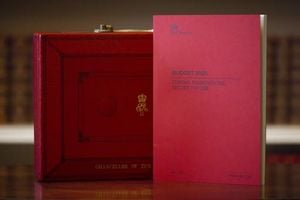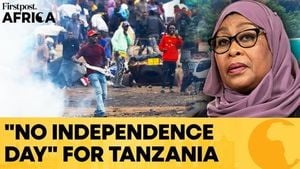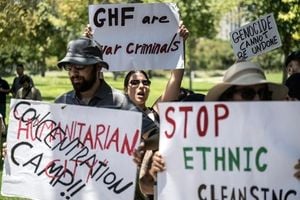On November 25, 2025, cities and communities across northern India paused to honor the 350th martyrdom anniversary of Guru Tegh Bahadur, the ninth Sikh Guru, whose enduring legacy of sacrifice and spiritual courage continues to inspire generations. The commemorations, held with remarkable scale and reverence, drew the participation of top political leaders, thousands of devotees, and a nation eager to reflect on the values of faith, freedom, and righteousness.
In Kurukshetra, Haryana, Prime Minister Narendra Modi headlined the state-level function, marking a day filled with both solemn remembrance and grand celebration. According to Hindustan Times, Modi’s visit was meticulously planned, with the venue sprawling across 170 acres and featuring special arrangements for langar, parking, and sanitation to accommodate the large influx of attendees. Security was notably tight, with multi-layered measures in place: 14 IPS officers, 54 DSPs, and nearly 5,000 police personnel were deployed, and high-resolution CCTV cameras monitored every movement. The police enforced a complete ban on drones and gliders, and heavy vehicles were rerouted to ensure smooth traffic flow. Kurukshetra’s superintendent of police, Nitish Aggarwal, cautioned, “Tourists coming for Geeta Mahotsav are urged not to park their vehicles on the roads and park them only in the parking lots designated by the administration.”
The Prime Minister’s itinerary was packed with symbolic gestures and significant unveilings. After landing by chopper at a helipad near Jyotisar, Modi inaugurated the Mahabharata Anubhav Kendra, an experience center developed under the Union tourism ministry’s Swadesh Darshan scheme. Costing approximately ₹200 crore, this new attraction brings the epic’s story, philosophy, and scientific aspects to life using cutting-edge technologies. Within the same complex, the Panchjanya memorial—a gigantic conch weighing 5.5 tonnes and standing nearly five meters tall—was unveiled in honor of Lord Krishna’s divine conch, a symbol of the triumph of righteousness and truth.
At 4:30 pm, Modi joined a special programme commemorating the 350th martyrdom anniversary of Guru Tegh Bahadur. There, he released a special coin and commemorative stamp, addressing the gathering and highlighting the Guru’s message of courage and sacrifice. The Prime Minister’s presence underscored the national importance of the event, which had been preceded by a month of statewide celebrations. Since November 1, various programs dedicated to Guru Tegh Bahadur had been organized across Haryana, including four religious yatras that set out from the state’s four corners to spread the Guru’s teachings far and wide.
Later in the evening, at around 5:45 pm, Modi performed darshan and pooja at the Brahma Sarovar, a sacred site in Kurukshetra. His visit coincided with the ongoing International Gita Mahotsav, which has drawn pilgrims and tourists to the city from November 15 to December 5. Haryana’s Chief Minister Nayab Singh Saini, along with other ministers and dignitaries, joined the Prime Minister at various points during the day, lending further weight to the occasion.
Meanwhile, in the national capital, the Delhi government declared a public holiday to allow citizens to participate fully in the day’s commemorations. According to Hindustan Times, what was initially slated as a restricted holiday was upgraded to a full public holiday by Chief Minister Rekha Gupta. “May Guru Sahib’s timeless message of courage, compassion, and freedom of faith continue to guide and inspire us in our collective journey ahead,” Gupta shared in a message on social media. The Chief Minister took a hands-on approach, personally supervising preparations for the three-day ‘Gurmat Samagam’ near the Red Fort, which began on November 23 and culminated on the anniversary itself.
The Red Fort, a historic site intimately linked with Guru Tegh Bahadur’s ultimate sacrifice, provided a fitting backdrop for the commemorative events. The program featured a grand museum showcasing rare historical accounts of the Guru’s life, a special light-and-sound show illuminating the ramparts, and Satsang–Kirtan sessions performed by seven Sangat groups. Gupta, alongside ministers Manjinder Singh Sirsa and Kapil Mishra, conducted an on-site inspection to ensure that security, crowd management, lighting, cleanliness, and emergency services met the highest standards. The Chief Minister’s call for participation resonated widely: “She urged people from across Delhi and beyond to participate in this once-in-a-century commemoration,” reported Hindustan Times.
Uttar Pradesh joined in marking the occasion as well, with the state government declaring a public holiday. All government offices, schools, and educational institutions across the state remained closed, allowing citizens to reflect on the Guru’s legacy. According to reports, both Delhi and Uttar Pradesh observed the day with deep devotion and respect, underlining Guru Tegh Bahadur’s enduring message of courage, freedom of conscience, and the protection of righteousness.
These large-scale observances were not merely ceremonial. They served as powerful reminders of Guru Tegh Bahadur’s unparalleled sacrifice for the protection of faith and human dignity. His martyrdom—marked by his refusal to renounce his beliefs in the face of persecution—has long been held up as a beacon of spiritual resilience. The 350th anniversary, coming at a time of social and political complexity across India, offered a moment for collective reflection on the values that underpin the nation’s pluralistic fabric.
The events in Kurukshetra and Delhi were mirrored by smaller gatherings and acts of remembrance across the country. From the historic Red Fort to the sacred banks of Brahma Sarovar, devotees and leaders alike paid homage to a figure whose teachings remain profoundly relevant. The release of commemorative coins and stamps, the inauguration of new cultural centers, and the careful attention to public participation all signaled a desire to bridge the past with the present, ensuring that Guru Tegh Bahadur’s legacy continues to inform India’s future.
As the sun set on November 25, the sense of unity and reverence was palpable. Whether through the grand spectacles in Kurukshetra, the reflective gatherings at the Red Fort, or the quiet closures of schools and offices in Uttar Pradesh, the 350th martyrdom anniversary of Guru Tegh Bahadur was marked by a shared commitment to honor the past and uphold the values of faith, courage, and freedom that he so bravely embodied.



